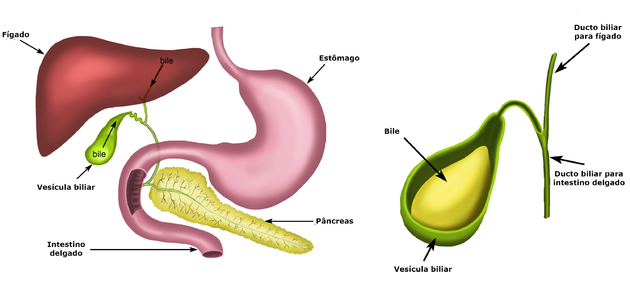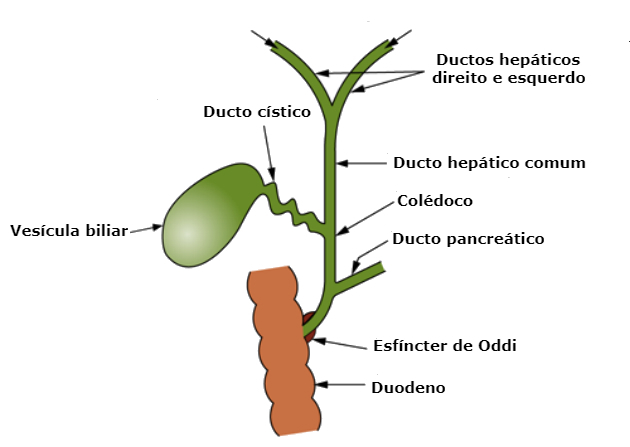Bile, bile or bile juice is a liquid fluid produced by the liver and acts as an aid in the digestion of food.
With a liquid and viscous consistency, it has a bitter taste and a greenish-yellow color.
What is bile for?

Acting on the digestive system, bile has the function of contributing to the absorption of nutrients and the digestion of fats ingested in food.
The main actions performed by bile are:
- Assistance in the process of absorption of fats and fat-soluble vitamins in the small intestine from the action of bile acids;
- Facilitates the action of enzymes produced by the pancreas;
- Elimination of waste through faeces, including bilirubin;
- Liver detox;
- Regulation of liver bacteria.
Bile production and composition
Bile is produced in the liver by hepatocytes, which are cells existing in the liver parenchyma.
The production of bile can be up to 1 liter per day and is diluted in the body to develop actions to aid digestion and absorption of nutrients.
Upon entering the gallbladder is stored and can be accumulated between 20 and 50 ml of fluid.
Bile has the following composition:
- 85% water
- 10% sodium bicarbonate
- 3% pigment
- 1% fat
- 0.7% inorganic salts
- 0.3% cholesterol
bile excretion

Bile goes through a process of excretion in the body, being carried out according to the following steps:
- Secretion through hepatocytes: The bile juice produced in the liver is secreted into the bile canaliculi, which are located between the hepatocytes and the hepatic laminae.
- Passage through the bile ducts: at this stage, the bile passes to the terminal bile ducts until it reaches the right and left hepatic ducts, which in the end form the common hepatic duct.
- Arrival in the gallbladder: the final step consists of passing through the hepatic duct to the common bile duct and finally reaching the gallbladder.
Jaundice
If the bile excretion is not carried out correctly it can cause some health problems. The most common is when the gallbladder presents some type of obstruction that prevents the excretion of fluid, causing it to accumulate in the liver.
This type of problem has effects on the body and is called jaundice. This condition has the following consequences: change in skin color, consistency and color of feces and in the functioning of metabolism.
learn more about:
- Organs of the human body
- Organs of the human body without which you can survive



